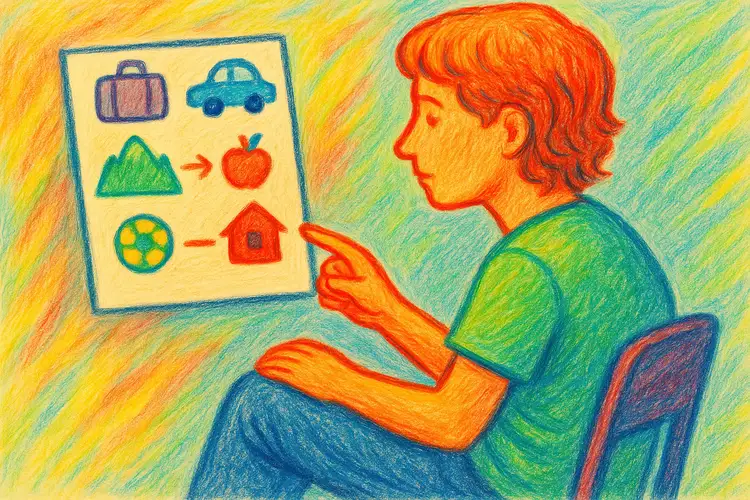Visual Schedules for Weekends: Turning Free Time into Calm Time
Published {$created} by Carsten Blum
Weekends are meant to be relaxing — but for many families, they can feel chaotic instead.Without school or fixed routines, days can quickly become unpredictable.For children with autism or ADHD, that lack of structure often leads to stress, frustration, or meltdowns.
Visual schedules bring back calm and clarity without taking away the freedom of weekends. They provide just enough structure for children to understand what’s happening, while leaving room for choice and flexibility.

How Visual Schedules Help on Weekends
Predictability: Children know what the day will look like.
Flexibility: Visuals can show optional or “choose between” activities.
Reduced stress: The day feels organized, even without strict plans.
Shared understanding: Everyone in the family knows what to expect.
Examples of Weekend Activities
A weekend visual plan might include:
Breakfast
Playtime (indoor or outdoor)
Family outing or walk
Lunch
Quiet time (reading, drawing, tablet)
Free play
Dinner
Movie or storytime
Bedtime routine
You can use icons for each step — or even let the child help pick and arrange them in order.
How to Create a Weekend Visual Schedule
Start with anchors: Keep meals and bedtime at regular times.
Add flexible blocks: Use icons for “play,” “family time,” or “outdoor time.”
Include choices: Let the child select between a few activities.
Prepare for changes: Use a “surprise” or “change” card for spontaneous plans.
Display it clearly: On a wall, fridge, or tablet where everyone can see it.
Example Weekend Plan
Time | Activity | Notes |
|---|---|---|
08:00 | 🍳 Breakfast | Start the day calmly |
09:00 | 🏞️ Outdoor play | Playground or garden |
11:00 | 🧩 Free play | Choose activity |
13:00 | 🍝 Lunch | Together time |
14:00 | 📖 Quiet time | Reading or tablet |
16:00 | 🚗 Family trip | Optional |
18:00 | 🍲 Dinner | Routine anchor |
20:00 | 🎬 Movie night | Wind down |
21:00 | 🌙 Bedtime | Visual bedtime routine |
Tips for Success
Balance structure and freedom: Too much planning can feel restrictive.
Involve your child: Planning together builds ownership.
Use positive visuals: Bright, friendly icons encourage engagement.
Keep weekends lighter: Avoid long lists or tight schedules.
Benefits Beyond the Weekend
Learning to balance flexibility with structure helps children handle holidays, breaks, and other less predictable times too.It builds confidence and keeps daily life calmer for the whole family.
Summary
Free time doesn’t have to mean chaos.With a visual weekend schedule, families can enjoy relaxing days together — predictable, calm, and full of small choices that keep everyone happy.
Next step: Try making a simple weekend plan with icons your child can choose from.